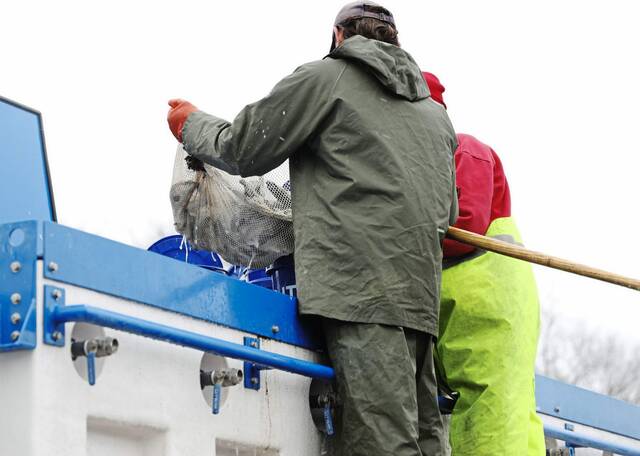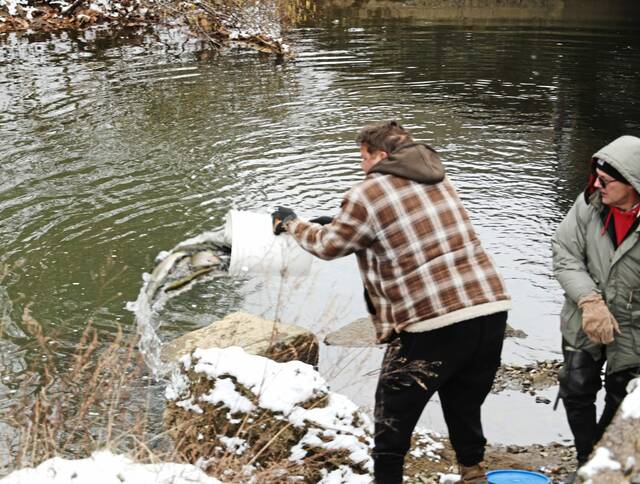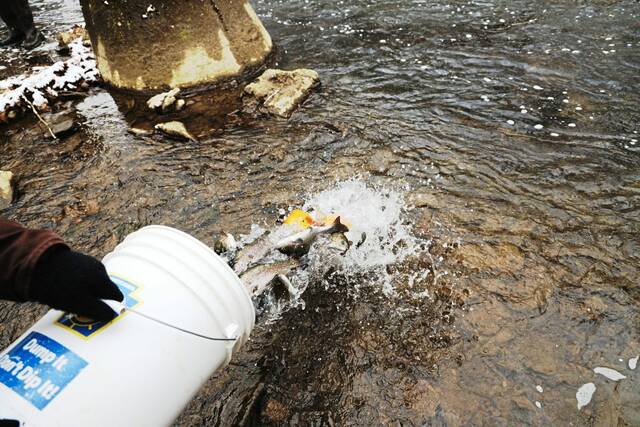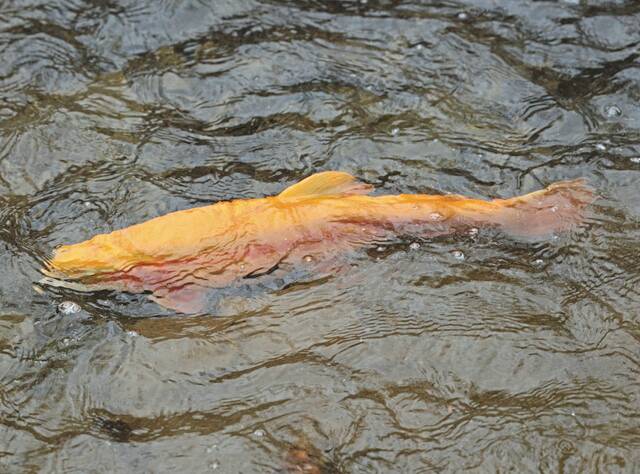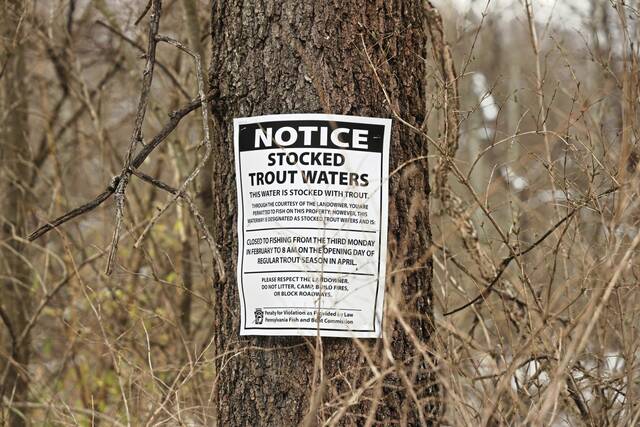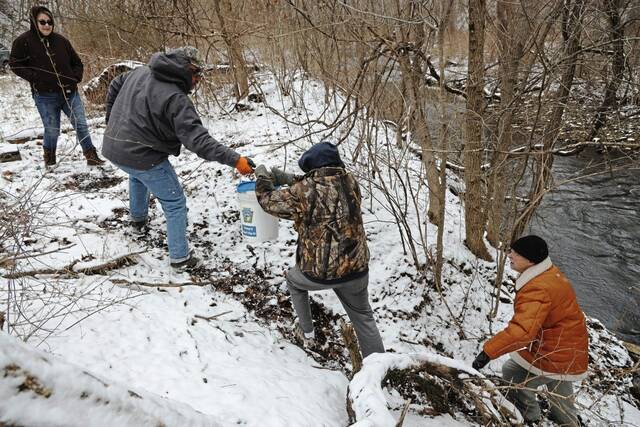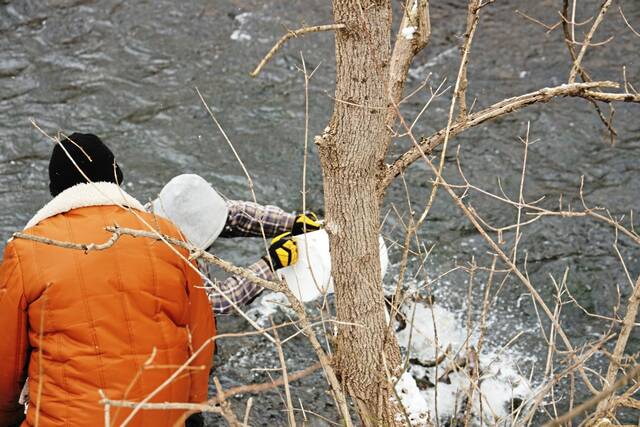Annual trout stocking along Pine Creek a sure sign spring is in sight
With temperatures dipping into the 20s and wind gusts sending snow swirling in the air, it’s a little hard to imagine a lazy day along the banks of a bubbling stream waiting for the fish to bite.
But on March 14, more than a dozen volunteers joined members of the state Fish and Boat Commission were on hand to stock thousands of fresh-water trout at various points along Pine Creek in Pine, Richland and Hampton townships ahead of the start of trout season on April 1. The state also hosts a Youth Mentored Trout Day on March 25.
“This is my 20th year coming out to stock trout,” said Jake Monskonski, 70, adding that while he is not much of a fisherman himself, he knows there’s a need for people to stock the streams with trout before the anglers show up.
“I only go out fishing about once a year,” said the retired railroad worker. “But I’ll help out with the stocking. It gives me something to do.”
This year more than 3.2 million trout will be raised in hatcheries and placed in waterways across the state, according to Mike Parker, the state Fish and Boat commission’s communications director.
The majority will be stocked before the start of the spring trout season with more added to replenish the stock after the season begins.
“The average stocked trout is a 1 and half years old, measures 11 inches long and weighs a little over a 1/2 a pound,” Parker said. “We also stock thousands of trophy-sized trout measuring between 20 and 24 inches.”
The species being stocked at Pine Creek this season include brown, rainbow and golden rainbow trout, he said.
Parker encourages anglers to keep the trout they catch because the ones that escape the hook likely won’t survive.
“Our stocking program is not intended to establish new, wild populations of trout,” he said. “The vast majority of streams that are stocked are naturally warm water that can’t support naturally-reproducing populations of wild trout.”
He said the most of the waterways that are stocked become too warm for trout during the late spring and early summer, which is not an adequate habitat for them to reproduce and survive.
Adam and Angela Gorcak of Richland started volunteering to stock trout last year after realizing that somebody else was putting in the effort to provide the fish they enjoyed catching.
“I’ve fished up and down this stretch of Pine Creek for years,” said Adam Gorcak, 51. “So when we heard about the need for volunteers to stock the trout we decided to help out.”
The lousy weather couldn’t put a damper on the joy Angela experienced after hauling a 5-gallon bucket of trout down a steep, muddy pathway to the stream bank and seeing a surprise when she pulled the lid off.
“Oh wow, that’s a palomino, and it’s a big one,” she said as she hoisted the bucket to toss them in. “That’s going to make a nice dinner for somebody.”
Parker said there’s a good reason the trout are tossed into the water instead of being gently slid from the bucket.
“The best method is to give the bucket a good 1-2-3 and then toss it with some force — low, across the surface of the water, avoiding any rocks,” he said.
This method is used because trout can become sluggish while being confined in a tank for several hours during transport.
“If you just pour the bucket of trout slowly into the water, it may seem like a more gentle approach, but the fish often just slide into the mud and their gills fill with silt, which makes it hard for them to breathe and swim and more likely to perish,” he said. “By giving the fish a good toss from the bucket, you are perking them up and causing them to swim, which gives them the best chance at survival.”
Tony LaRussa is a TribLive reporter. A Pittsburgh native, he covers crime and courts in the Alle-Kiski Valley. He can be reached at tlarussa@triblive.com.
Remove the ads from your TribLIVE reading experience but still support the journalists who create the content with TribLIVE Ad-Free.



